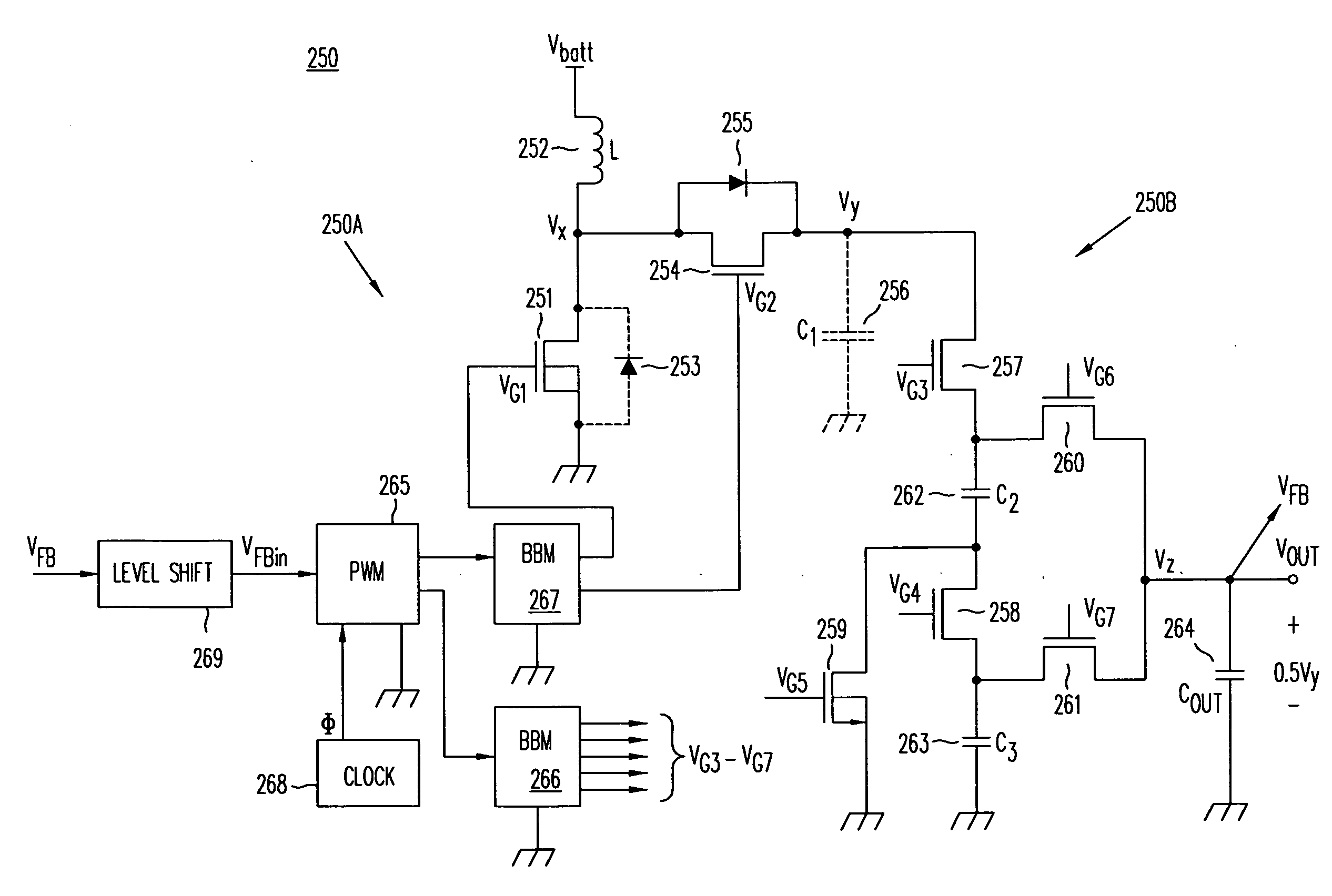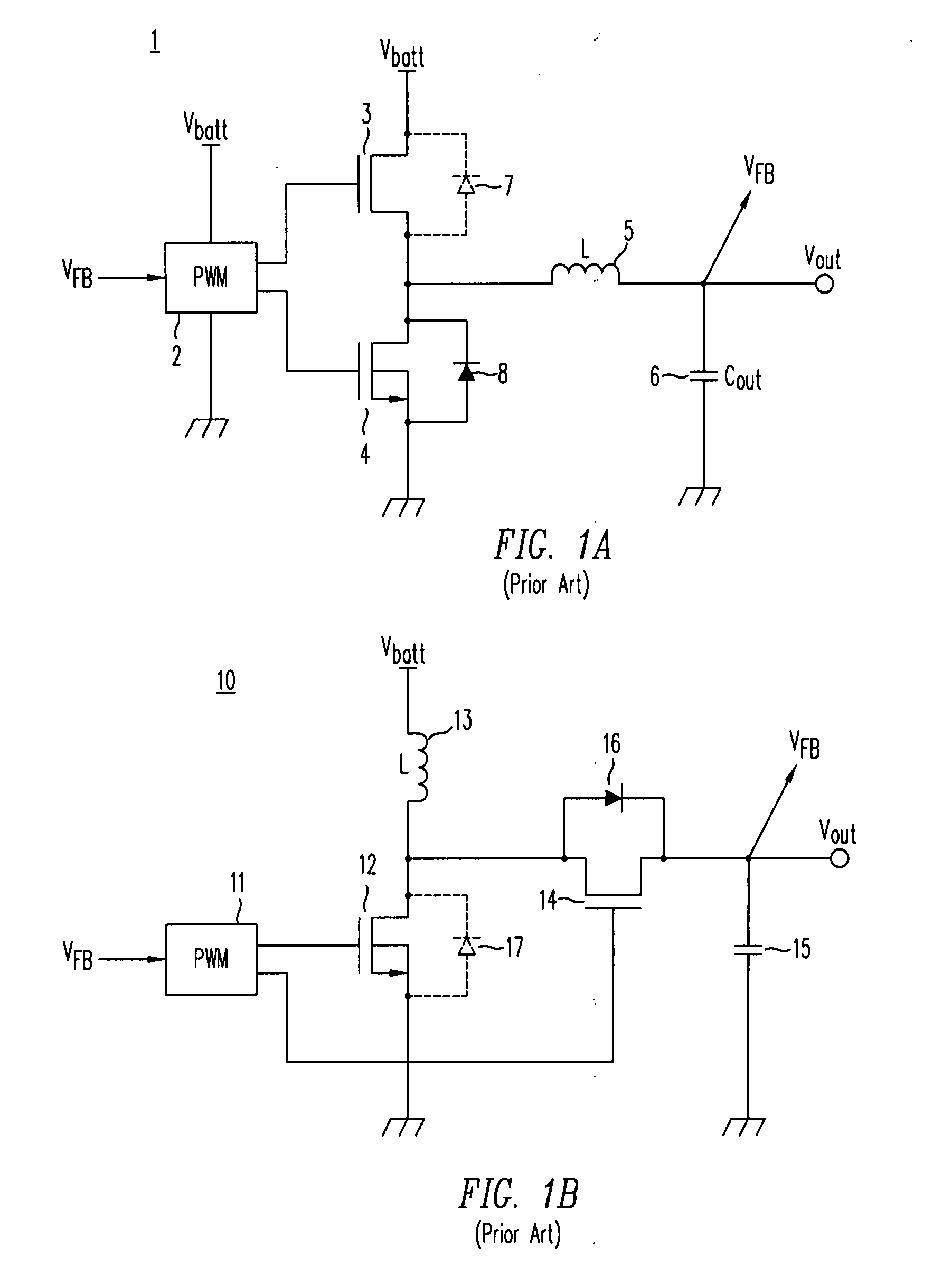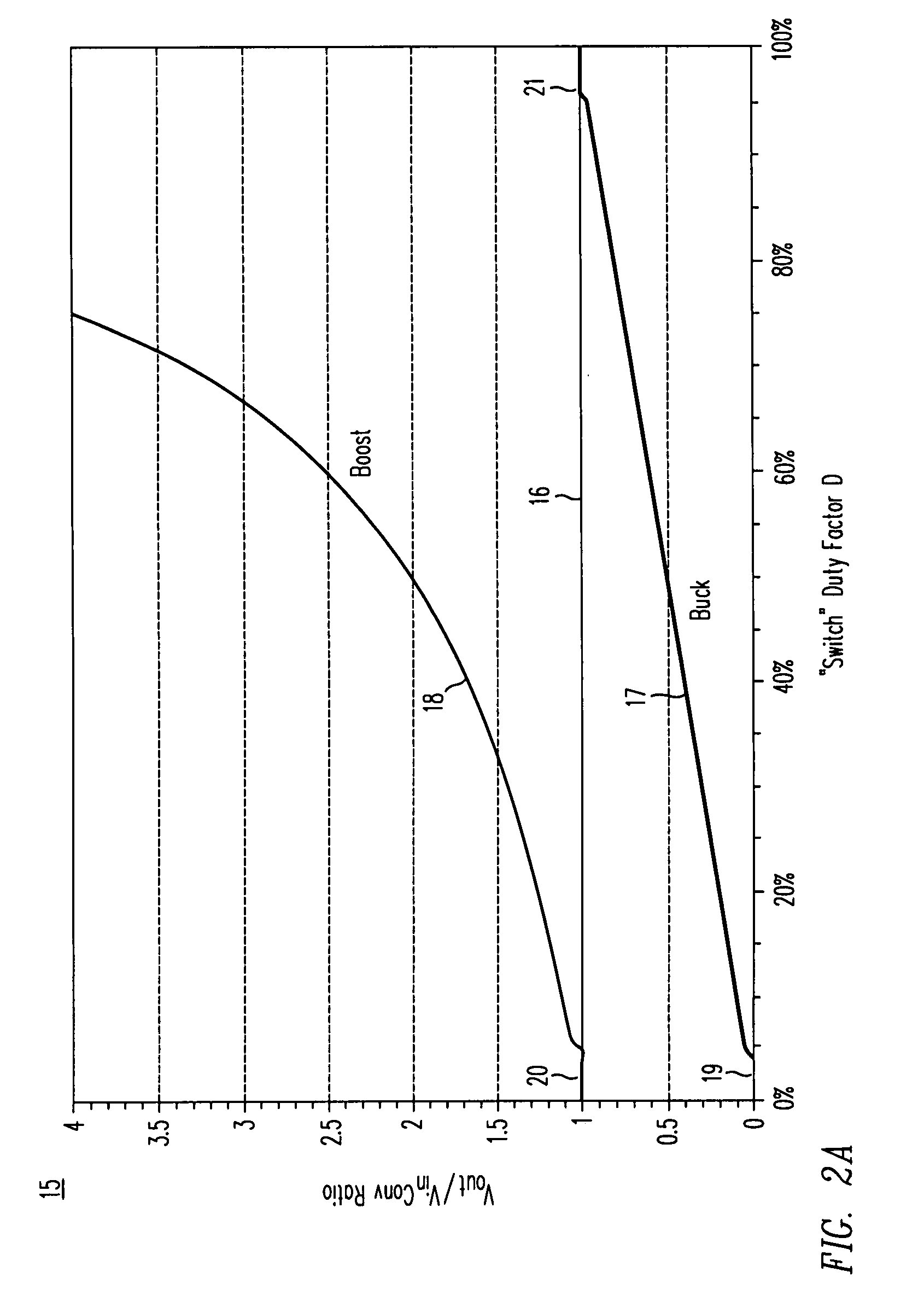High-efficiency DC/DC voltage converter including up inductive switching pre-regulator and capacitive switching post-converter
a dc/dc voltage converter, inductive switching technology, applied in the direction of electric variable regulation, process and machine control, instruments, etc., can solve the problems of off-time problem affecting both synchronous or non-synchronous buck converters, boost converters cannot reach the unity transfer characteristic smoothly, and the effect of poor regulation
- Summary
- Abstract
- Description
- Claims
- Application Information
AI Technical Summary
Benefits of technology
Problems solved by technology
Method used
Image
Examples
Embodiment Construction
[0156]FIG. 7 graphically illustrates the requisite voltage conversion ratio Vout / Vin of a DC / DC converter operating at a variety of voltage outputs and for inputs ranging from 1.8V to 6.6V. Curve 181 illustrates that for a 4.5V to 5.5V input range, regulating a 5V output to ±1% accuracy requires operation above and below a unity conversion ratio, meaning an up-down regulating converter is required to hold a tighter tolerance than the ±5% or ±10% accuracy commonly guaranteed by AC / DC wall adapters.
[0157]Another need for up-down conversion occurs when using a lithium ion battery to produce a voltage intermediate to its wide voltage range. As examples, curves 182, 183, 184 in FIG. 7 illustrate outputs at 4V, 3.6V, and 3.3V, respectively. Since these load voltages fall within the Lilon battery's normal discharge voltage range of 4.2V to 3V, the converter must regulate in step-down mode with a voltage conversion ratio below unity at the beginning of the cell's discharge cycle, and in ste...
PUM
 Login to View More
Login to View More Abstract
Description
Claims
Application Information
 Login to View More
Login to View More - R&D
- Intellectual Property
- Life Sciences
- Materials
- Tech Scout
- Unparalleled Data Quality
- Higher Quality Content
- 60% Fewer Hallucinations
Browse by: Latest US Patents, China's latest patents, Technical Efficacy Thesaurus, Application Domain, Technology Topic, Popular Technical Reports.
© 2025 PatSnap. All rights reserved.Legal|Privacy policy|Modern Slavery Act Transparency Statement|Sitemap|About US| Contact US: help@patsnap.com



